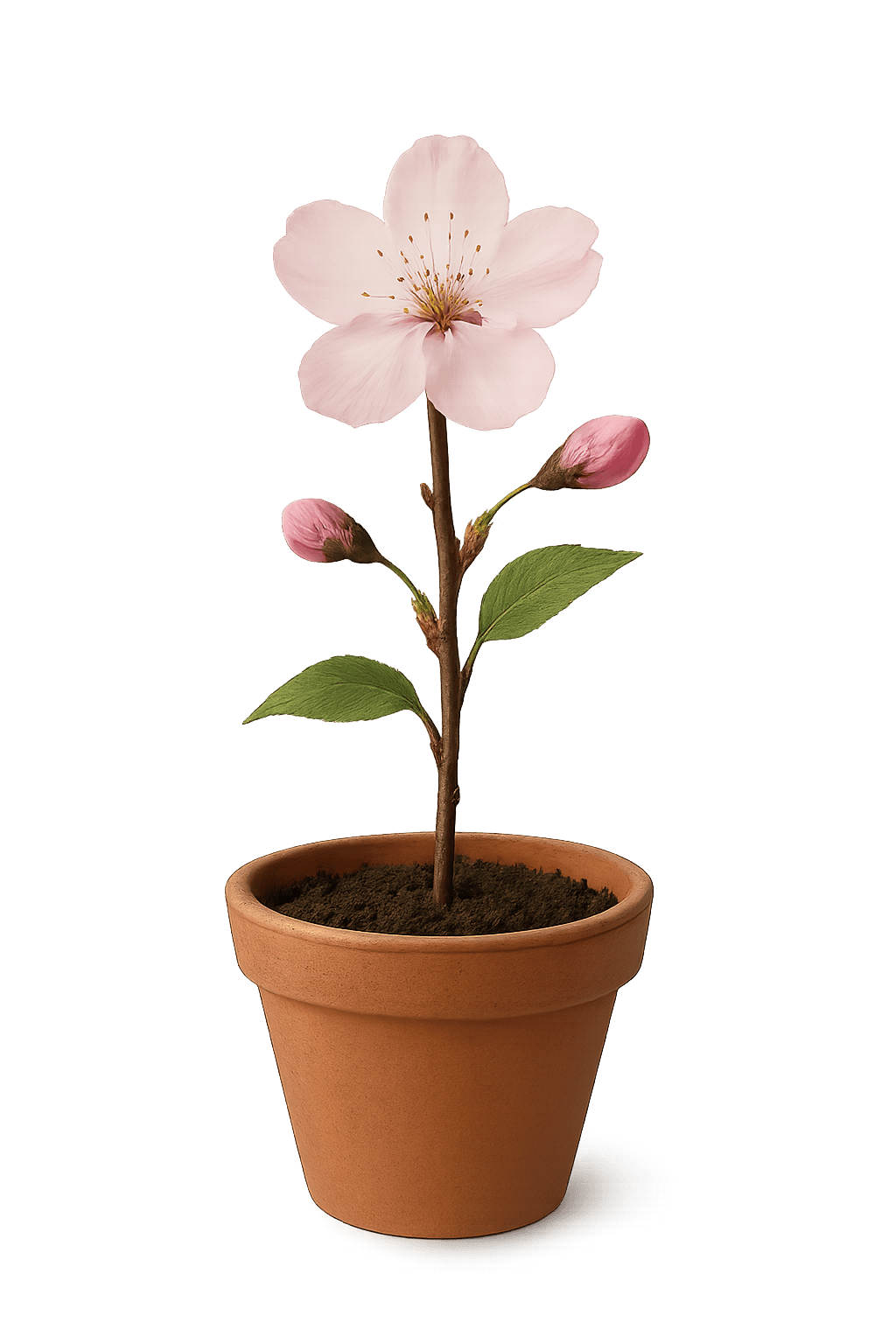Cherry Blossom
Cherry Blossom Detailed Encyclopedia Introduction
Cherry Blossom is a beautiful flowering tree known for its stunning pink and white flowers that bloom in spring, symbolizing renewal and the fleeting nature of life.

Basic Info
Family:Rosaceae
Scientific Name:Prunus serrulata
Origin:East Asia
Flowering Period:Spring
Height:5–15 meters
Lifespan:Perennial
Morphology
Leaves:Oval-shaped leaves with serrated edges, green in summer
Flowers:Delicate pink or white flowers with five petals
Roots:Deep taproot system
Stem:Woody trunk with spreading branches
Growth Habits
Soil Requirements:Well-drained, fertile soil with good organic matter
Watering Needs:Keep soil consistently moist, especially during dry periods
Light Requirements:Full sun to partial shade
Temperature Requirements:5-25°C (41-77°F)
Classification & Varieties
Main Classifications
Ornamental Varieties
Professional Care
✂️ Pruning Management
Pruning Timing:Late winter or early spring before bud break
Pruning Method:Remove dead branches, thin crowded areas, shape canopy
Pruning Purpose:Maintain tree health, improve air circulation, enhance flowering
Required Tools:Pruning shears, loppers, saw for larger branches
🛡️ Pest & Disease Management
Common Pests:
Common Diseases:
Prevention Measures:Good air circulation, proper spacing, regular inspection
Treatment Methods:Remove affected parts, apply fungicides, improve drainage
🌱 Fertilization Management
Fertilizer Type:Balanced tree fertilizer
Fertilization Frequency:Once in early spring
Fertilization Timing:Before new growth begins
Fertilization Amount:Moderate application around drip line
💧 Water Requirements
Watering Frequency:Deep watering weekly during dry periods
Watering Amount:Thorough soaking to reach deep roots
Watering Method:Water at base, avoid wetting foliage
Dehydration Signs:Wilting leaves, drooping branches
Basic Care Tips
- •Plant in well-drained soil with good air circulation
- •Protect from strong winds and late frosts
- •Prune during dormancy to maintain shape and health
- •Mulch around base to retain moisture and regulate temperature
- •Enjoy the brief but spectacular spring bloom period
Ecology Value
Pollinators:Bees, butterflies, birds
Wildlife:Provides food and shelter for various wildlife
Environmental Value:Urban beautification, air purification, cultural significance
Cultural Symbolism
Symbolic Meaning:Renewal, beauty, the fleeting nature of life, spring
Historical Background:Cherished in Japanese culture for over 1000 years
Related Festivals:Cherry Blossom festivals worldwide, Hanami in Japan
Artistic Expression:Featured extensively in Japanese art, poetry, and culture